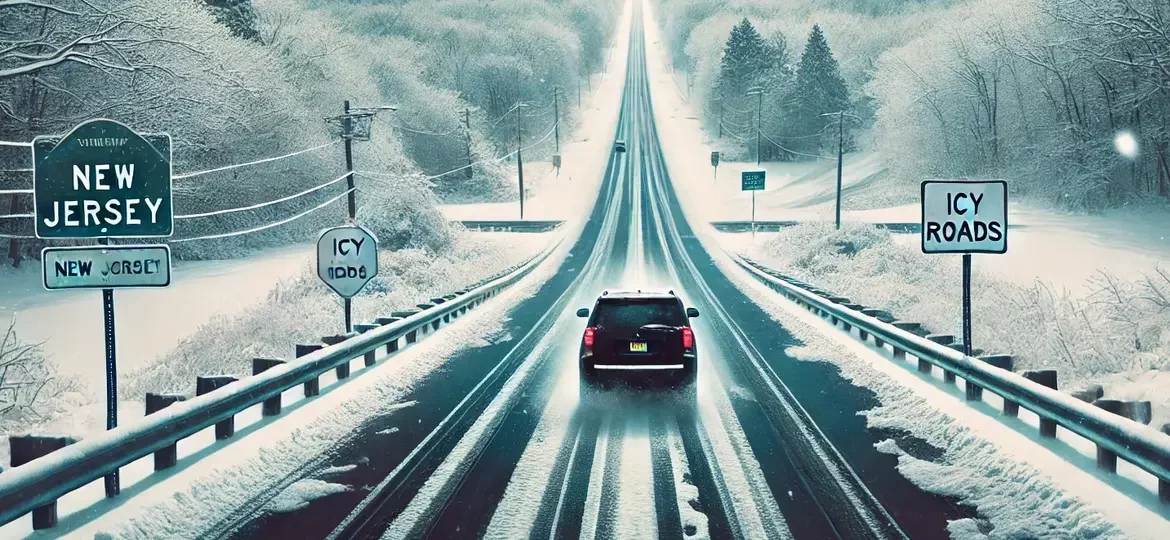
New Jersey’s snowy winters may look beautiful, but they create perilous driving conditions—black ice, reduced visibility, and slick roads turn routine errands into hazards. Too often drivers underestimate these risks, resulting in collisions that cause serious injury or worse. If you’ve been hurt in a winter-weather accident, it’s important to know both how to protect yourself on the road and what legal recourse is available.
1. The Scope of the Problem
-
Every year in the U.S., about 6 million vehicle accidents occur, and roughly 1.5 million of those are linked to weather.
-
In winter conditions alone:
-
Snow and sleet contribute to ~225,000 crashes, resulting in 70,900 injuries and 870 deaths.
-
Icy roads account for ~190,100 collisions, leading to 62,700 injuries and 680 fatalities.
-
Slush causes ~168,300 wrecks, with 47,700 injuries and 620 deaths.
-
2. Essential Winter Driving Tips
When travel can’t be put off, follow these precautions:
-
Slow Down & Space Out
Leave at least three times the normal following distance. -
Brake Smoothly
Avoid sudden stops; on ABS-equipped vehicles, press firmly and steadily. -
Stay in Low Gears
Use lower gears going uphill or downhill to maintain traction. -
Skip Cruise Control
Manual speed control is safer on slick surfaces. -
Mind Bridges & Overpasses
They freeze first and thaw last—approach with extra caution. -
Never Overtake Snowplows
Conditions are usually worse ahead of the plow than behind it. -
Maintain Your Vehicle
Check tire tread, wiper blades, lights, and fluid levels before a storm.
3. Spotting & Handling Black Ice
Black ice is transparent and deceptively smooth. It typically forms when daytime meltwater refreezes on shaded or elevated roadways (bridges, ramps). If you hit black ice:
-
Stay Calm—avoid jerky steering inputs.
-
Don’t Slam the Brakes—coast until you reach better pavement.
-
Use Caution with Rear Brakes—if you must brake, apply very gently to the rear wheels.
-
Watch at Traffic Lights—condensation under idling cars can refreeze, creating hidden patches.
4. When Weather Isn’t Your Only Culprit
While snow and ice are factors, New Jersey law requires drivers to modify their behavior for conditions. Common forms of negligence include:
-
Speed Too Fast for Conditions (even if under the posted limit)
-
Tailgating leading to rear-end crashes
-
Poor Vehicle Maintenance (bald tires, worn wipers, faulty brakes)
5. After an Accident: Your Next Steps
-
Call 911 and get a police report on record.
-
Photograph Everything—road surface, damage, skid marks, injuries.
-
Seek Medical Care—document even minor aches or pains.
-
Collect Witness Details—names and contact info.
-
Talk to a Lawyer—an experienced attorney can preserve evidence and advocate on your behalf.
6. Navigating Insurance in a Winter Wreck
Insurance adjusters may downplay another driver’s fault by blaming “the weather.” To bolster your claim:
-
Assemble Clear Evidence (photos, witness statements, police reports)
-
Review Your Coverage (collision vs. comprehensive vs. PIP under New Jersey’s no-fault rules)
-
Understand PIP Limits—you may need to pursue a liability claim if medical bills exceed your Personal Injury Protection cap.
7. Why Legal Guidance Matters
Winter-weather crashes often involve disputes over fault, delays in payment, or outright denials. A personal injury lawyer like Bryan Mintz can:
-
Investigate and establish liability
-
Handle negotiations with insurers
-
File suit if necessary to secure fair compensation for medical expenses, lost income, and pain & suffering
Contact the Daniel J. Zirrith Law Firm today for a FREE CONSULTATION
If you’ve been injured in a winter driving crash, don’t go it alone. Our team can guide you through the claims process and protect your rights.
📞 Call us today at (732) 521-5900
📩 Or contact us online to schedule a consultation.
Stay vigilant this winter—safe driving and knowing your rights can make all the difference.

